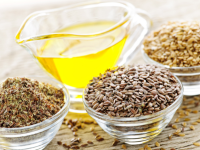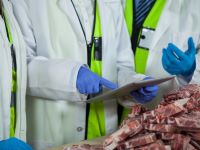
J. David Legan, PhD
Director of Science
David earned his Ph.D. in Food Technology from the University of Reading in the UK by modeling the ecology of mixed microbial populations, and then moved to Campden BRI in a variety of microbiological food safety research and client service roles. During that time, he was project lead for the Bacillus component of the UK’s pathogen modeling program. He moved again to Nabisco Research in New Jersey where he ran the corporate microbiology lab and developed a program of preservation technology development and microbial modeling. After the Kraft Foods acquisition, he moved to Chicago to work on Food Safety and Preservation research, and through modeling and validation studies:
- Optimized Oscar Mayer’s use of lactate and diacetate and their naturally cultured alternatives as Listeria-control agents in Ready to Eat meats
- Specified process conditions central to Oscar Mayer’s commercial launch of High Pressure Pasteurization of naturally cured RTE meats
David had responsibility for the Kraft cultures R&D group, developed a partnership to explore microwave sterilization leading to several patents, and led a program that developed an internal proprietary natural antimicrobial commercialized in several Kraft products. Technologies from his group supported approximately $4 billion in annual sales.
After years as a microbiology "client", he is now back in the "provider" role as Director of Science at Eurofins Microbiology Laboratories, Inc., by way of the Covance Food Solutions group based in Madison, WI, which he joined in 2016. In this role, he ensures appropriate method validation, explores new testing technologies, and fields multiple complicated food microbiology questions.
Products that his team has evaluated or developed and launched include:
- The 3M MDS platform in the Madison microbiology laboratory
- Flow cytometry for enumeration of probiotics
- Strain-level confirmation of probiotic identification using the polymerase chain reaction (PCR)
- Next-generation sequencing using the Oxford Nanopore Technologies GridION sequencing platform for microbial identification and microbiome analysis
Below are resources from David:
The Innovative FEED Act proposes a modernized regulatory pathway for these zootechnical animal food substances, reclassifying them as food additives and enabling approval through the Food Additive Petition (FAP) process. This webinar provides insights from Eurofins’ experience navigating veterinary product development and highlight how legislative reform can unlock the next generation of feed solutions.
As global demand for animal protein continues to rise, producers, distributors, and suppliers face increasing pressure to meet complex veterinary drug compliance standards. This webinar offers a practical roadmap for navigating the regulatory landscape governing the export of animal protein, with a focus on FDA and USDA requirements, international certification processes, and emerging trade dynamics.
In the initial MAHA report, ultra processed foods (UPFs) took center stage due to their lack of nutrient value, high caloric nature, and inclusion of suspect ingredients. Among those suspect ingredients, the MAHA commission has highlight seed oils. In this blog, we help give clarity on how food companies can look at seed oil inclusion in their products.
In this webinar, our experts will discuss the latest international regulations, the impact of recycled materials, and how proactive testing strategies can keep your packaging safe and compliant. Originally Recorded on September 17, 2025
With the release of the Make America Healthy Again (MAHA) report, the food and supplement industries are facing a pivotal moment. Join two of our leading experts as they unpack the report’s findings and explore what they could mean for consumer-packaged goods (CPG) companies. From reformulation strategies to enhanced ingredient scrutiny, this session will help industry professionals prepare for a wave of potential changes. Originally Recorded on August 21, 2025
At Eurofins Nutrition Analysis Center, we break down the latest AAFCO changes to dietary fiber labeling in pet foods. In this video, our experts guide you through selecting the right testing method based on product type, offering a comprehensive overview of available analytical approaches.
Learn how to prevent, manage, and respond to a USDA NR (noncompliance record) in USDA-regulated facilities. This guide offers practical tips for minimizing USDA noncompliance records through strong food safety systems, communication, and expert support.
In this episode of The Scoop, host Keren Breiterman speaks with Chief Science Officer, Daryl Sullivan about the evolution of infant formula testing standards and his role in shaping them.
There are many ways to sell and distribute authorized food packaging materials on the US market. One pathway for introducing new food contact substances to the U.S. market is by submitting a Food Contact Notification (FCN) to the FDA for premarket approval. Watch our webinar exploring the FDA’s authorization process for new food contact substances, focusing on migration testing and safety evaluation. Originally Aired on June 4, 2025
Regulatory agencies such as the FDA and the Alcohol and Tobacco Tax and Trade Bureau (TTB) have recently proposed and/or finalized several regulations pertaining to the labeling of food & beverages. Read our blog for a straight-forward explanation of the latest updates.












